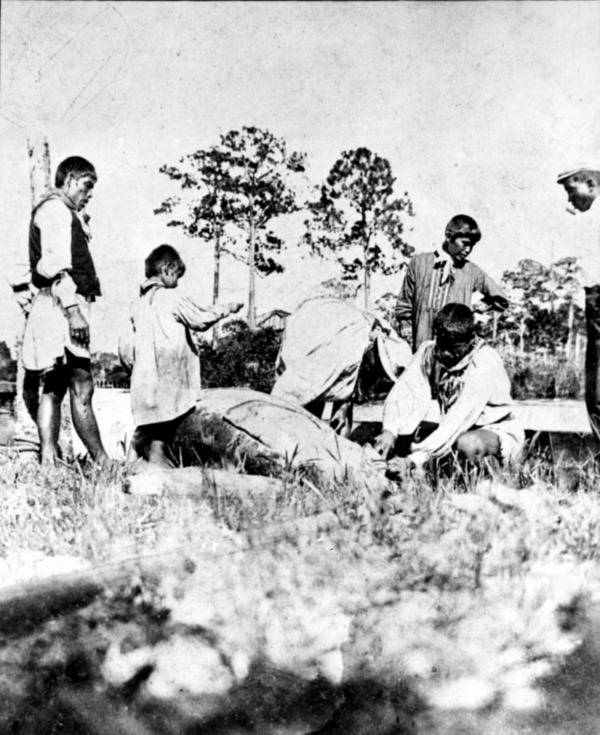Advocacy for manatee conservation is universal. You don’t hear people running around, trying to establish a sea cow hunting season in Florida–and for good reason! The scars on their backs are a constant reminder that environmental and recreational pressures have made life very difficult for these cute and clumsy creatures. But this wasn’t always the case.
While the idea of harpooning a manatee seems unthinkable today, they were once actively hunted, which should come as no surprise. These floating slabs of fat and protein, with limited ability to evade predators, would have been an obvious target for humans primarily subsisting on fish.
Manatee hunting was a practice shared by many cultures, including the Seminole Indians of Florida. Primary accounts, accompanied by photographs of 20th-century hunts, reveal stories of tough times in the Everglade swamp.
According to Big Cypress Councilman Mondo Tiger of the Seminole Reservation located in southern Florida, “You could live on the amount of meat it provided for weeks. They were part of our diet.”
In his interview with The Seminole Tribune, Tiger recalled the meat as similar to beef, saying, “If you could, you’d dehydrate under the chickees and smoke it.”
Refrigeration was unheard of in the Everglades during this era, making it a tall order to preserve an animal weighing roughly 1,000 pounds. Even after butchering and reducing the yield to about 500 pounds of meat and fat, preventing spoilage in the hot, humid environment would have been a real challenge.
According to The Trail of Florida’s Indian Heritage, a nonprofit organization dedicated to Florida’s archaeological history, “Manatees were almost always hunted with shotguns but were occasionally speared in the creeks and inlets along the Florida coastline.”
Sea cow was considered a delicacy in Florida and throughout the Caribbean, Central America, and South America. A website dedicated to promoting Belizean tourism posted a first-hand account of a citizen who allegedly participated in a hunt during the 1960s.
“Once you got to the manatee area, which is west of the island of Ambergris Caye, you circled the grassy area hoping to see a muddy trail. If you followed the mud trail and it got denser, you knew you were following the animal. If the trail got weaker, you knew you were moving farther away from the manatee.”
The Caribbean hunter continued, “When you got your boat close enough, you flung the harpoon hoping to strike it at its head or back. Once injured, the manatee will put on a good fight. It would fling its large tail and pull out all the rope from your harpoon line. It would then start dragging your boat for several minutes until it got tired.”
While this account of a manatee hunt is hard to verify, the description of events seems plausible. Like a shark or large halibut caught in shallow water, a manatee struggling to avoid capture would likely cause a violent scene.

According to the Florida Fish and Wildlife Conservation Commission, “Manatees are protected by the Marine Mammal Protection Act of 1972, the Endangered Species Act of 1973, and the Florida Manatee Sanctuary Act of 1978. It is illegal to feed, harass, harm, pursue, hunt, shoot, wound, kill, annoy, or molest manatees.”
However, this isn’t to say there haven’t been some interesting ideas floated over the years. After filming them in Florida, the late French ocean explorer and cinematographer Philippe Pierre Cousteau once suggested manatees could be a viable human food source at scale.
Cousteau reportedly said during his interview with the Citrus County Chronicle in 1971, “According to reports, the meat has no resemblance to fish. In fact, manatee steak looks and tastes like beef. Because the sea cow relies entirely on vegetation, the meat is very high on the biological energy chain, which means it is high in nutrition.”
To this day, hunting is an insignificant issue for manatees, but there are some reports of poaching in South America and the Caribbean. The main concern for manatees is accidental human-related conflicts like being prop-chopped, pollution, and environmental changes.
Fortunately, sea cow ranching has yet to make it past the conceptual stage in Florida and likely never will.
Feature images via State Archives of Florida.
Read the full article here

